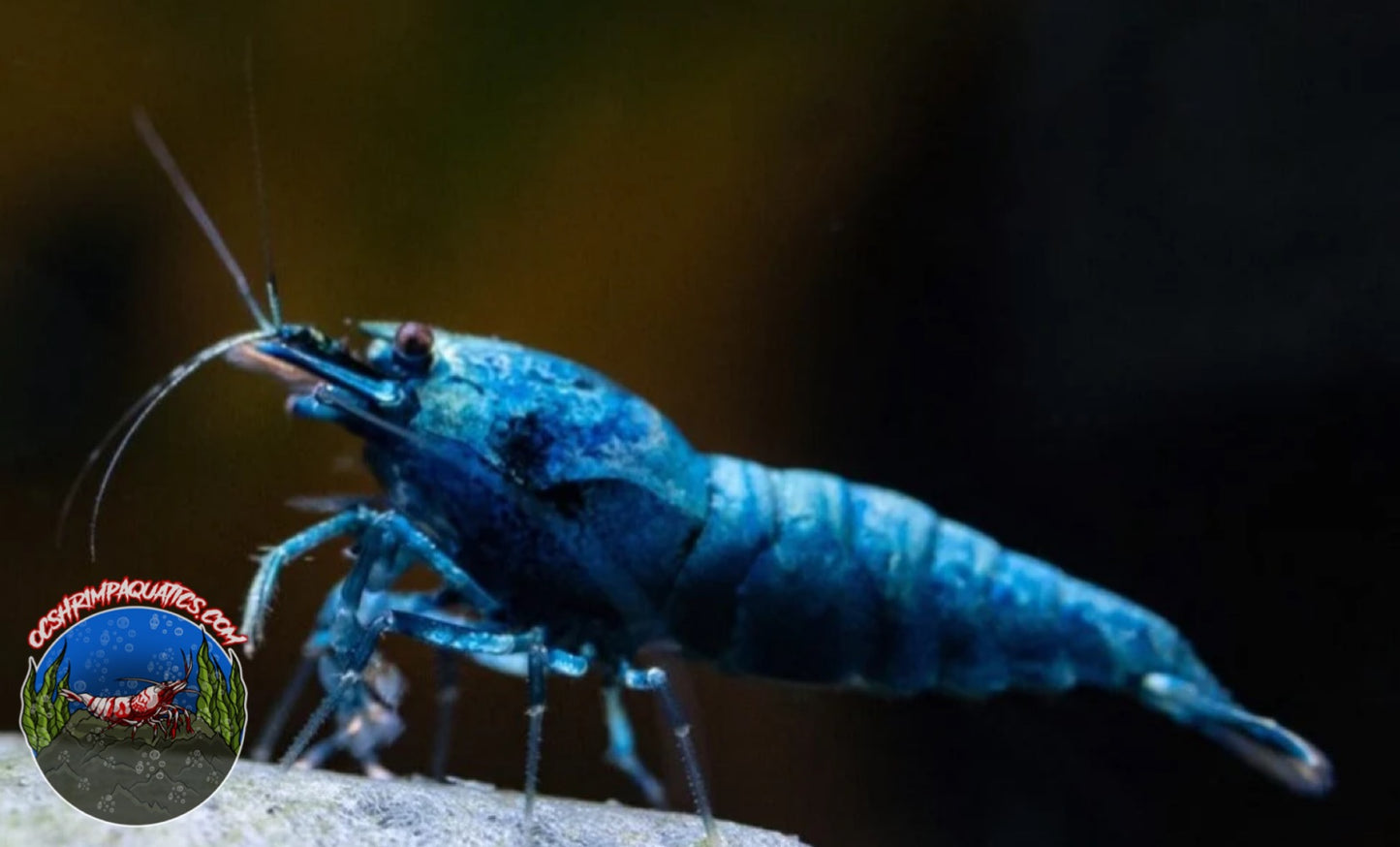1
/
of
1
OC SHRIMP AQUATIC
BLUE BOLT EXTREME SHRIMP
BLUE BOLT EXTREME SHRIMP
Regular price
$35.99 USD
Regular price
Sale price
$35.99 USD
Unit price
/
per
Shipping calculated at checkout.
Couldn't load pickup availability
Share
Blue Bolt Extreme Caridina Shrimp are a stunning variant of Caridina cantonensis known for their vibrant blue coloration, which makes them a popular choice among shrimp enthusiasts. These shrimp require specific water conditions and care to thrive, making them more suitable for intermediate to advanced aquarists. Here's a comprehensive care guide to ensure your Blue Bolt Extreme Caridina Shrimp thrive:
1. Tank Size and Setup
- Tank Size: A minimum of 10 gallons is recommended for keeping Blue Bolt Shrimp, as a larger volume of water helps maintain stable water parameters. A larger tank (20 gallons or more) is ideal if you plan to keep a colony or mix them with other shrimp.
- Substrate: Use an active substrate specifically designed for shrimp, such as ADA Aqua Soil or other shrimp substrates. These substrates help maintain the slightly acidic pH levels that Blue Bolt Shrimp prefer.
- Plants and Decor: Incorporate plenty of live plants like Java moss, Anubias, Bucephalandra, and Cryptocoryne. These plants offer hiding places and surfaces for biofilm growth, which is a natural food source for shrimp. Adding driftwood, rocks, and leaf litter (such as Indian almond leaves) will provide additional hiding spots and contribute to a natural environment.
- Lighting: Moderate lighting is sufficient. Blue Bolt Shrimp do not require intense lighting, and moderate lighting can help support plant growth without causing excessive algae blooms.
Water Parameters
- Temperature: Blue Bolt Shrimp prefer cooler water temperatures, ideally between 68-74°F (20-23°C). Avoid temperatures above 77°F (25°C), as higher temperatures can stress the shrimp and shorten their lifespan.
- pH: They thrive in slightly acidic water, with a pH range of 5.5 to 5.7 Active substrates will help maintain this acidic environment, which is crucial for their health.
- Hardness: Soft water is preferred, with a general hardness (GH) of 4-6 dGH and carbonate hardness (KH) of 0-2 dKH. Soft water conditions support proper molting and overall health.
- TDS (Total Dissolved Solids): Aim for a TDS level between 100-150 ppm. Using reverse osmosis (RO) water with shrimp-specific mineral additives can help achieve the desired TDS and water parameters.
- Water Quality: Blue Bolt Shrimp are sensitive to water quality. Aim for ammonia and nitrite levels at 0 ppm, and keep nitrates below 10 ppm. Perform regular water changes (10-20% weekly) using dechlorinated or RO water to maintain optimal water quality.
Filtration and Water Flow
- Filtration: Use a gentle filtration system, such as a sponge filter or a low-flow internal filter. Sponge filters are ideal as they provide mechanical filtration, aeration, and a surface for beneficial bacteria and biofilm growth.
- Water Flow: Ensure the water flow is gentle. Blue Bolt Shrimp are not strong swimmers, and strong currents can cause stress. Adjust the filter output to create a mild flow throughout the tank.
Feeding
- Diet: Blue Bolt Shrimp are omnivorous and will graze on biofilm, algae, and detritus. Offer a balanced diet with high-quality shrimp pellets or granules as their staple food.
- Supplemental Foods: Supplement their diet with blanched vegetables (such as spinach, zucchini, or cucumber), algae wafers, and occasional protein-rich foods like bloodworms or daphnia. Adding leaf litter, like Indian almond leaves or dried oak leaves, can provide natural food sources and tannins that benefit their health.
- Feeding Frequency: Feed them small amounts every other day, providing only what they can consume within a few hours to avoid overfeeding and water quality issues.

Order and get 180 reward points
Earn points by signing up for our rewards program

